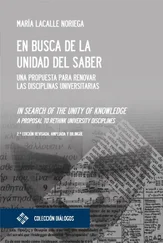Koltsov began teaching there in 1906. In 1917, he married a former Shanyavsky University student, Maria Sadovnikova. 107I will describe the tragic end of the both in Chapter 4. Koltsov also taught at the Advanced Courses for Women (also known as Moscow Women’s University). He opened research laboratories in both institutions. Both universities were independent and existed on private donations and students’ admission fees. Koltsov and many other professors were invited back to Moscow University in March 1917, after the Provisional Government granted universities independent status. In addition, Koltsov became the director of the Institute of Experimental Biology, also created through private donations and opened after the February Revolution. This institute and the Physical Institute (later the Institute of Biological Physics and then Institute of Physics and Biophysics), which was opened in January 1917 under the directorship of Academician Pyotr Lazarev, were organized by the Society of Moscow Scientific Institute (OMNI). OMNI was established in 1912 as an independent privately funded institution and was not controlled by the government. However, after November 1917, all private institutions, including universities and institutes, were nationalized by the Bolshevik regime.
The Bolsheviks were determined to bring independent-minded professors such as Koltsov under control even more than the academicians in Petrograd (Koltsov was a corresponding member of the academy because he lived in Moscow). In 1919, Lenin formulated the official Party policy toward scientists and intellectuals: “The intellectual forces of the workers and peasants are growing and gaining strength in the struggle to overthrow the bourgeoisie and its henchmen, the intellectual lackeys of capital, who imagine they are the brains of the nation. Actually, they are not brains, but shit.” 108
Besides arrests and show trials, another method began to be used to control science and the universities: Members of the Bolshevik Party, frequently of low professional level, were assigned in high numbers to the universities and colleges with the idea that they would replace the old professors. In 1921, Academician Vernadsky wrote about this situation to his son, Georgii (known as George in the United States), who emigrated in 1920, first going to Prague and then, in 1927, to the United States:
Everything is spoiled and getting worse, but no one can do anything about it. Recently there was a Congress of [University] Rectors, Deans and Workers of the High School. As usual, it was a false [meeting]…. The number of bureaucrats, Communists, and… “red” Professors is almost twice as high as those who had been elected. Everywhere the minority and majority are broken up along this line… The new project is insane and without a future: bureaucrats and Communists are introduced into the faculties and councils, and they do not have even any right at the offices of the Commissariat!… There were student riots in Moscow because of this. They were quickly suppressed: the leaders were beaten up at the CheKa, then all students were dismissed and shortly after that sent to their homes, and everybody became calm. 109
At the beginning of 1922, Lenin became seriously ill (he had progressive syphilis) and started to work from the hospital in Gorki, a small town near Moscow (after Lenin’s death, renamed Gorki Leninskie), later the location of Trofim Lysenko’s headquarters and his “experimental” station. In April 1922, Stalin replaced Lenin as general secretary of the Bolshevik Party. Despite Lenin’s illness, he continued to organize the control of science and the intelligentsia. Now it was also the turn of professional scientific meetings, unions, and publications.
In May–July 1922, on the basis of notes written by Commissar of Health Nikolai Semashko, the Politburo discussed the possibility of organizing the first Doctors’ Plot case. Lenin sent Semashko’s notes to Stalin with a request to show them strictly secretly (Lenin’s words!) to Dzerzhinsky and the Politburo members. 110Semashko was very concerned about the system of regional doctors, which had existed in Russia since the late nineteenth century, viewing it as a threat to centralization. This issue was discussed at the All-Russian Congress of Doctors in May 1922, whose members voted in favor of the local systems, considering that much more progressive than the central system proposed by Semashko. However, the Politburo did not take action against the doctors at this time.
In his letter to Dzerzhinsky regarding measures against the intelligentsia (dated May 19, 1922), Lenin was especially irritated by economists:
…The third issue of the Petrograd journal Economist , published by the 11th branch of the Russian Technical Society, has on its cover a list of names of the [editorial] board… All of them are evident counterrevolutionaries, helpers to Entente [i.e., Western Allies], 111its servants and spies, who corrupt our students. It is necessary to organize measures against them, to capture these “military spies” constantly, and to deport them abroad systematically. 112
Lenin hated economists and economy as a science because he was determined to replace the traditional economy, based primarily on the works of Adam Smith, with the Marxist centralized planned economy, which, as we know now, failed completely after seventy years of Communist power. Even before the Bolshevik Revolution, Lenin used humiliating terms for the economists: “On the whole, professors-economists are only scientific shop-assistants of the class of capitalists, and professors of philosophy are scientific shop-assistants of the theologies.” 113
As a result of Lenin’s requests to Dzerzhinsky, in June 1922 the Politburo adopted the following recently declassified resolution introducing strong GPU/OGPU censorship of all intellectual activity in the Soviet Union:
Draft Resolution
To guarantee the order in VU [High School, i.e., universities and colleges] institutions, it is necessary to establish a commission consisting of representatives of the Glavprofobr [Main Directorate of Professional Education] and the GPU (Yakovleva 114and Unshlikht) to work on the following questions:
• filtration of students for the next academic year;
• establishing of strong restrictions for acceptance of students of non-proletarian origin;
• establishing of political loyalty certificates for students that are not sent by professional Party organizations and are paying fees for education.
The same Commission should introduce rules for meetings and unions of students and professors, which should restrict the autonomous status of the VUZ (i.e., the university or college).
No Meeting or All-Russian Congress of specialists (medical doctors, agronomists, engineers, lawyers, etc.) should be allowed without GPU authorization…
Beginning from June 10, the GPU should register once again all scientific, religious, academic, and other societies and unions through the Narkomvnudel [Commissariat of Inner Affairs or NKVD]. 115New societies cannot be created without the appropriate registration by the GPU. All unregistered societies must be considered illegal and immediately disbanded.
The VTsSPS [All-Russian Council of Trade Unions] should not allow the creation and/or function of any union of specialists besides professional unions, and the existent sections within unions should be reorganized with the involvement of the GPU. The VTsSPS can issue permits for the creation of new sections of specialists only after receiving GPU permission.
The VTsSPS Presidium should give the GPU a [legal] right to use administrative exile for three years and the deportation abroad for all persons whose presence in the territory of the Soviet Republic is dangerous for revolutionary order.
Читать дальше











